It's not your imagination - Thanksgiving is warmer
November has warmed an average of 2.4°F across 92% of US cities.
Every year, Americans brace for the holiday squeeze — the travel chaos, the grocery bills, the relentless pressure to make magic from thin air.
To add to the existing economic stress, there’s another force reshaping the cost of the holidays: climate change.
The unseasonably warm fall and November temperatures sweeping the country aren’t just meteorological curiosities; they’re economic stress multipliers.
Warmer springs expose Thanksgiving staples like cranberries to crop-killing frost, while hotter summers cause cranberry scald.
Livestock feed becomes costlier. Energy markets wobble as heating demand comes late, then spikes all at once. Even holiday travel budgets take a hit as airlines adjust fuel costs and weather-disrupted schedules.
Climate change manifests right there in your grocery cart, your utility bill, the price of your Thanksgiving table. And as autumn heat becomes the new normal, the holiday season grows more financially fragile for ordinary families.
The climate crisis is reshaping traditions whether some people want to acknowledge it or not — and the cost of celebrating is becoming another casualty of a warming world.
What the data says
Every single county in the United States has warmed since 19701.
November temperatures have increased by an average of 2.4°F in 92% of U.S. cities, according to an analysis by Climate Central.
In 31% of cities, November temperatures have increased by 3°F or more, with some cities experiencing warming of more than 6°F.
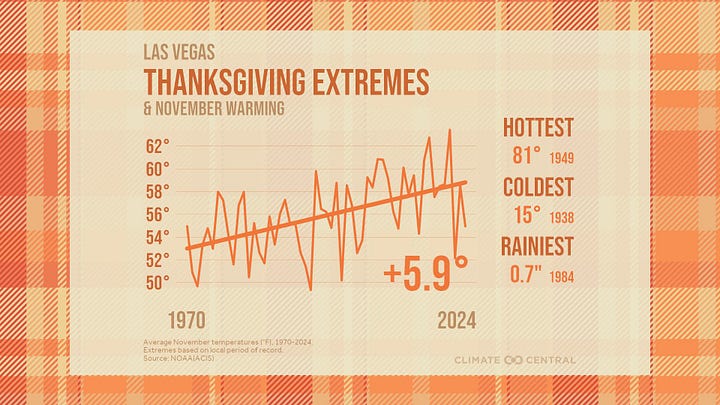
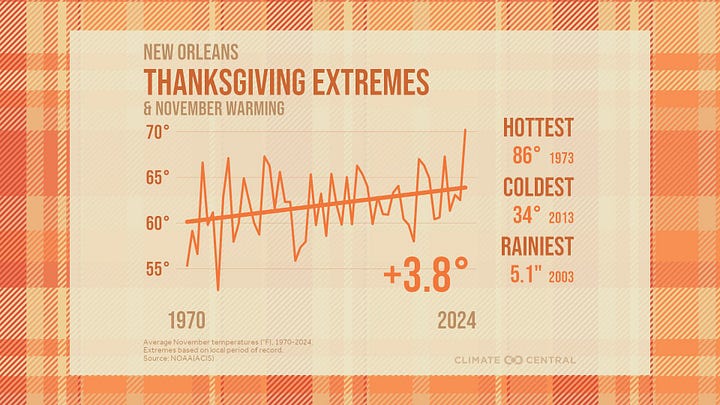
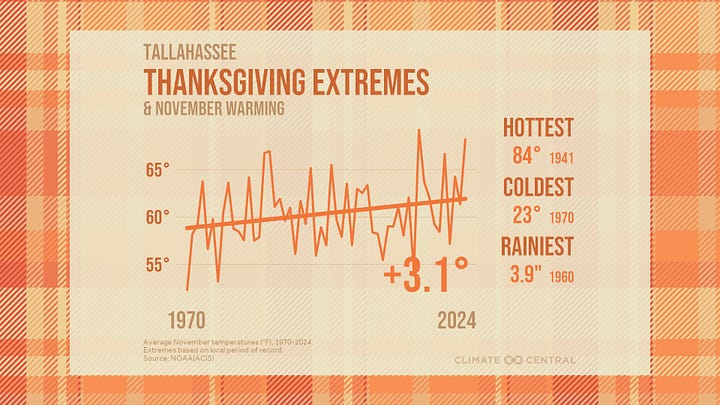
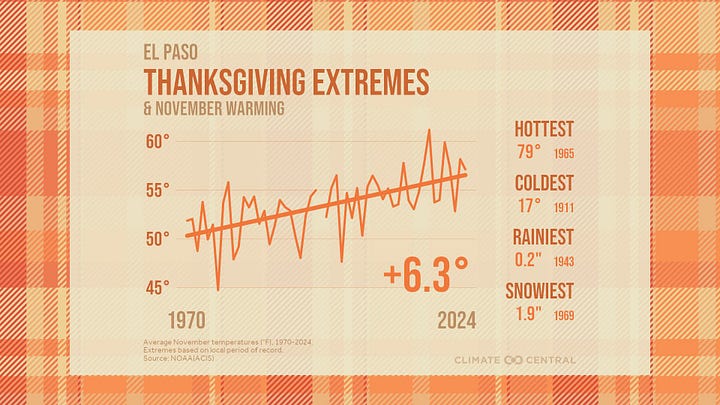
November trends are reflective of seasonal and annual trends in global warming, which can have a significant impact not just Thanksgiving meals, but across the entire food system.
In the U.S., food is the third highest household expense. And it’s getting pricier. During the last 10 years, U.S. food prices rose faster than overall inflation. In 2026, food prices are forecast to increase again2.
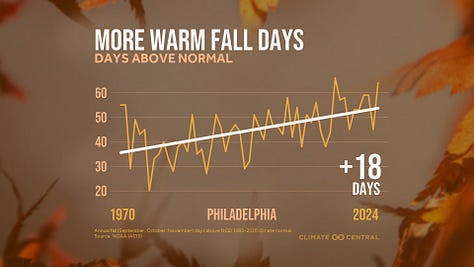
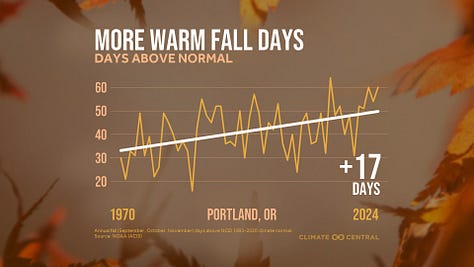
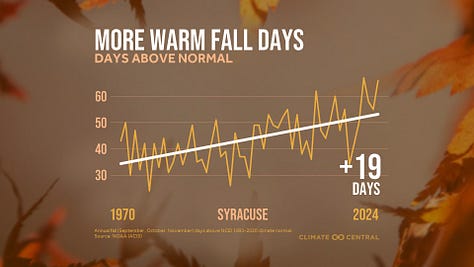

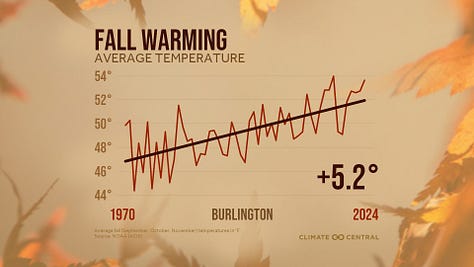

The USDA’s Economic Research Service recently reported that food-at-home (groceries) prices rose 2.4% year-over-year in June 2025.
On top of that, warming has contributed to roughly 19% of U.S. crop insurance losses between 1991 and 2017, per Climate Central — a cost that ultimately lands on taxpayers.
Once rare extreme events are now happening more frequently and with greater intensity, leading to nearly $22 billion in total crop losses in 2023 alone.
Heat waves scorch fruit before it ripens. Torrential rains drown fields that once absorbed spring showers. Record droughts tighten water supplies, forcing farmers to triage which crops survive. Cold snaps strike out of season before it even starts, killing blossoms and wiping out entire harvests in a single night.
The USDA, NOAA, and countless peer-reviewed studies now point to the same conclusion: climate extremes are hitting harder, coming faster, and leaving farmers with less time to recover.
And because the food system is a chain, every broken link — every failed harvest, every ruined field — shows up downstream in higher prices, emptier shelves, and greater instability for families who already feel squeezed.
This Climate Matters analysis is based on open-access data from the National Oceanic and Atmospheric Administration (NOAA). See Methodology for details. Climate Central analyzed the last 55 years (1970–2024) of November temperature data in 245 U.S. cities.
From: Climate Central, “Climate Matters,” November 19, 2025



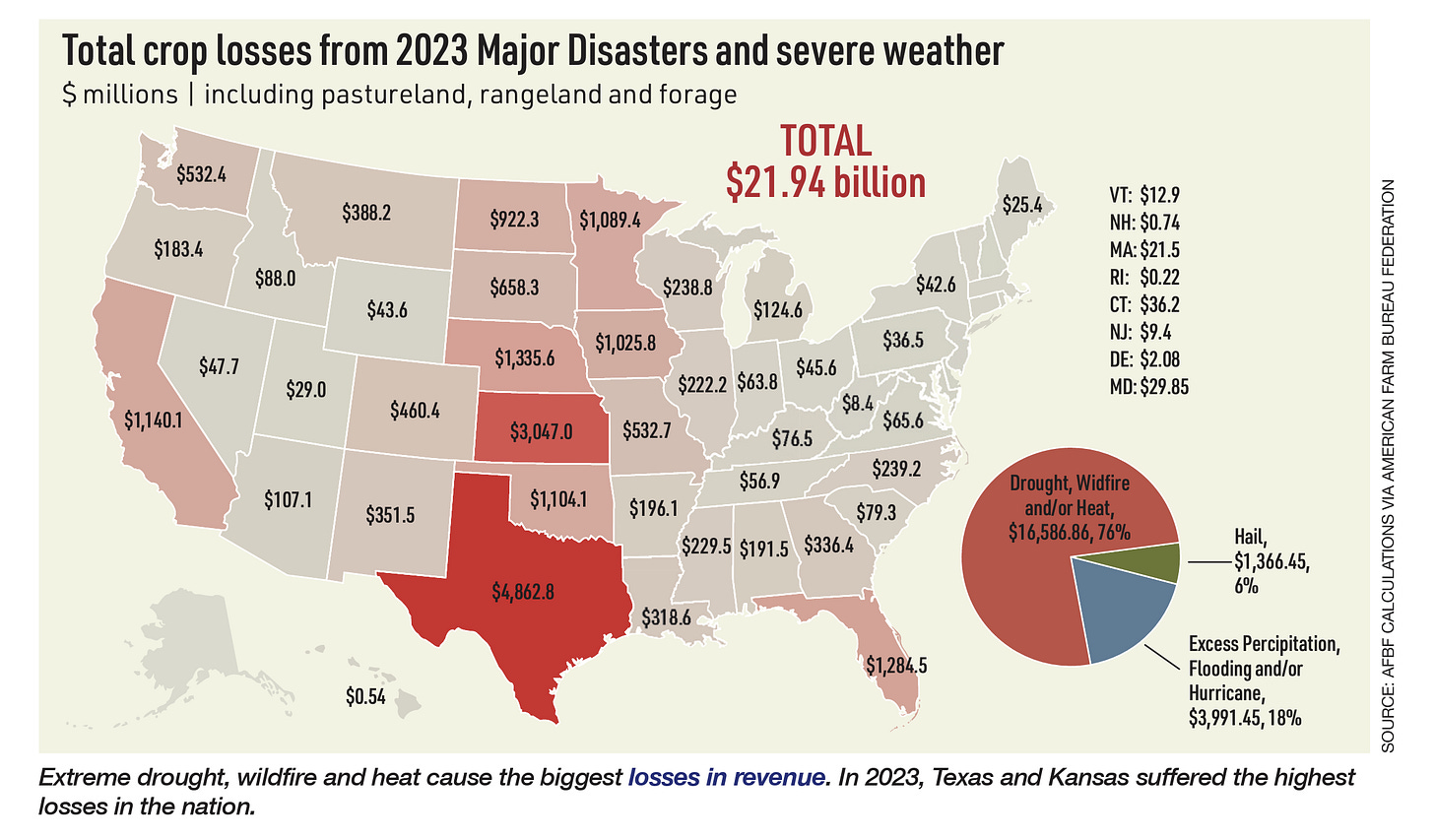
Our Thanksgiving will be colder. High of 58 today and a high of 48 on Thanksgiving.